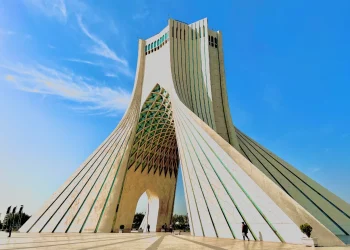Six weeks after arriving in the White House promising to reverse the previous administration’s zero tolerance policy, President Joe Biden is faced with an unforeseen scenario: the increase in undocumented immigration, especially of unaccompanied minors and the limited response capacity (infrastructure and resources) to deal with the emergency.
As immigration detention centers along the border fill up and the Department of Homeland Security (DHS) enlists others that have been closed, the numbers of detainees continue to rise.
A recent report by the Office of Customs and Border Control (CBP) reveals that in January of this year 78,323 arrests of undocumented immigrants were carried out on the southern border, among single adults, families and UAC. In December the number of arrests reached 73,923.
The New York Times reported that the number of migrant children in custody along the border “has tripled in the last two weeks to more than 3,250,” according to CBO documents accessed by the newspaper.
“And many of them are detained in prison-like facilities for more than the three days (72 hours) allowed by law,” he adds.
Legal deadlines
Detention beyond the legal terms indicated in the Flores Judicial Agreement of 1997 and the TVPRA Act of 2008 (on the prevention of human trafficking) is due to two reasons: the increase in the number of unaccompanied minors registered at the border and an inadequate infrastructure to process them in accordance with the provisions of the law.
Lawyers consulted by Univision Noticias say that, unlike the previous government, Biden’s immigration policy aims to reestablish due process, but for now it lacks the infrastructure required by law.
“Donald Trump disarmed the existing infrastructure to focus on enforcement (incarceration and deportations),” says Alex Gálvez, an immigration attorney practicing in Los Angeles, California. “Now Biden will have to rebuild it as soon as possible to meet the legal deadlines and allow the development of due process,” he adds.
Both the 1997 Flores Agreement and the TVPRA Act establish that the Border Patrol can hold immigrants detained at the border for up to 72 hours (three days) and hand them over to the custody of the Immigration Office. and Customs (ICE) or the Department of Health and Human Resources (HHS). The maximum period of detention in these dependencies must not exceed 21 days and immigrants, once these periods have been fulfilled, continue to free the development of their cases in immigration courts, where a judge will decide the future of their stays in the United States.
Persistent problem
“Immigration authorities are expected to announce this week that there were nearly 100,000 arrests, including encounters at port entrances, in February, according to people familiar with the latest agency data,” NYT said.
It adds that another 19,000 migrants, including adults and children, have been captured by border agents since March 1 at the border with Mexico.
The causes of the increase in the number of arrests at the border are due, on the one hand, to the reversal of policies adopted by the Donald Trump government in the last four years. But also due to the lack of adequate preparation.
“Biden’s intentions are good, to reverse Trump’s extreme immigration policies, but we believe they lacked more preparation,” says Francisco Moreno, executive director of the Confederation of Mexican Federations in Los Angeles (California). “It could have been better than what we’re seeing.”
Moreno also says that “the increase in immigration at the border, the arrests, the criticism of the detention times and the hasty opening of detention centers for minors and families, is assuming US citizenship and the good can be reversed. idea he had when he got to the White House. ”
“I think the president should take a break and re-engineer his infrastructure plan to give the refugees the attention they deserve. That would give it a better respite for due process to flow, ”said the activist.
At the border, they point out that the increase in immigrants is notorious in some nearby points, such as Matamoros. “You see more movement, but the presence of organized crime that controls the steps and demands the payment of fees, between $ 500 and $ 700 per person, is also more noticeable,” says Irineo Mujica, director of the organization Pueblo Sin Fronteras.















